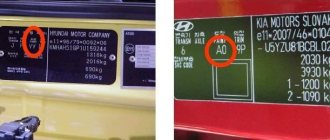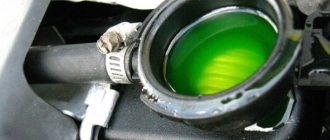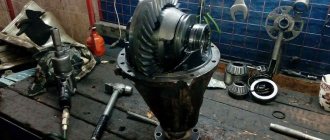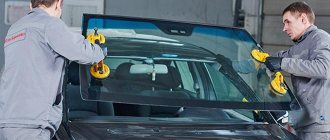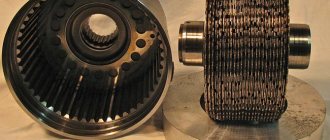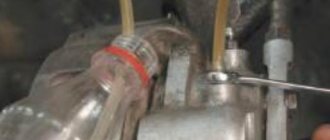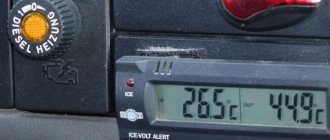How to carry out scheduled and emergency repairs of diesel engines
Repair of diesel engines of passenger cars, their fuel equipment, and high-pressure fuel pumps (HPFP) are expensive and complex operations. This type of repair work is most often trusted to professionals.
Increasingly, car owners are purchasing diesel cars due to their efficiency, reliability, long service life, reduced emissions of harmful substances, and improved performance.
In modern cars, as a result of diagnostics, there are often cases of diesel engine malfunction not due to the fault of the fuel injection pump itself, but as a consequence of failures in the settings of electronic control systems. Here it is enough to ensure the correct settings of the electronics, and the engine will begin to work safely.
Engine assembly
The technical center is equipped with special tools, the engine workshop is equipped with machines and fasteners, where the assembly of a diesel engine takes place. Car service specialists are well versed in car engines and have knowledge of the physics of metals, seals, gaskets and information on the tightening torques of each brand. Despite the similarity in design between gasoline and diesel engines, the assembly process will show significant differences. Diesel has a higher compression ratio than gasoline-type internal combustion engines. For this reason, the most basic parts - connecting rods, crankshaft, liners, pistons - are more reinforced.
An important point to note is that heavily loaded fasteners and seals are only used once during the process. Preparing the workplace, checking the availability of all necessary tools, sealant, lubricant, spare parts. Checking for defects in parts of various sizes, their size and tolerance. All this is especially important if the engine of special equipment is to be assembled. After dismantling, the parts must be thoroughly washed and the closed cavities must be blown out with compressed air. All production work is carried out in a clean room.
The order of assembly of cargo engines has its own certainty. 1) Crankshaft - we verify the absence of cracks and cavities using a magnetic flaw detector, checking for axial runout. 2) Pistons and connecting rods - if necessary, they need to be adjusted. It should be remembered that the difference in weight of each piston is 4 grams within the engine. For connecting rods, this difference is 8 g. Particular attention is paid to the connection of the connecting rod with the piston. It is required to either match the marks of the piston and connecting rod. Or, if there are no marks on the connecting rods, then we focus on the locks of the liners. If in front, then on the right. If the piston has a floating pin, then during the assembly process it will first be necessary to heat the upper heads of the connecting rod to 270-300 degrees.
3) The thickness of the new gasket during the assembly of the cylinder-piston group. It must be greater than the height of the piston exit above the plane of the block by at least 0.5 mm. If, when tightening, the gasket sags by 0.25-0.3 mm, it will not affect the operation of a gasoline engine, but it will affect the operation of a diesel engine.
4) Checking the compression of the piston group, cylinder head, gasket and distribution mechanism using a special device - a compression meter, turning off the fuel supply, cleaning and installing fuel pipes and injectors.
5) Installation: Removing cables, hoses, retarder, retarder, intarder, generator power supply, air conditioning compressor, steering pump, gearbox (gearbox), turning off the power supply to the electrical wiring of the front part of the cabin, changing the oil
6) Installation of attachments : starter, generator, fuel pump, fan, water pump, power steering pump, high-pressure fuel pump (HPF), etc., components on a rebuilt engine, diagnostics and cleaning of parts.
If you follow the rules during the further assembly of the diesel engine, there will be no problems with starting and further operation. If any mistakes were made, they will have to be corrected.
Apply online or call the contact numbers. We are always happy to cooperate. Contact us!
Algorithm for diagnosing fuel systems of diesel engines
When checking the operation of diesel engines, work is carried out in the following sequence:
- Control of diesel fuel supply by the pump, its quantity, pressure.
- Fuel pump performance analysis - shaft rotation speed during startup and termination of diesel fuel delivery.
- Checking the frequency of fuel injection in the fuel injection pump section.
- Monitoring the condition of injectors.
As the measures to check the fuel equipment systems are completed, an objective description of the condition is given, a list of restoration operations is identified - repair, replacement of injectors, high-pressure fuel pump, fuel tanks. The diagnostic conclusions also include determining the total cost of repair work, taking into account the cost of original components and parts that require complete replacement.
When overhauling a diesel engine, the following work is performed:
1. Troubleshooting and repair of the crankshaft
During troubleshooting work, the main and connecting rod journals are inspected and ground to repair size. Main and connecting rod bearings are installed corresponding to the repair size. The crankshaft is checked for runout and centered.
2. Defects of pistons
Compression and oil scraper rings are replaced, all oil channels are cleaned, and during assembly the pistons are sorted by mass characteristics.
3. Defects of connecting rods
The connecting rod is checked for proper geometry and bending.
4. Cylinder block
The cylinders are bored to the repair size, and then honed. This complex technological process of processing the cylinder mirror is carried out by professionals using special equipment. If necessary, align the mating plane mating with the cylinder head. Oil channels are also cleaned and purged.
5. Cylinder head
Repair work on the cylinder head includes cleaning the combustion chamber from soot and carbon deposits, straightening and grinding the mating plane, grinding in each valve and its seat, replacing the valve guide, troubleshooting and replacement of valves. Also, the rocker mechanism of the valves is subject to troubleshooting. After assembly, the temperature gap between the valve and the rocker arm is checked in engines without hydraulic compensators.
6. Defective camshaft and gears
On the camshaft, check the geometry of the cams and the main shaft supports. The drive and idler gears are checked and defective.
7. Checking the diesel power system
The high pressure fuel pump is checked at the diagnostic stand. At this stand, the quantitative fuel supply and injection pressure are checked and adjusted. The injectors are checked for injection pressure and spray quality. Fuel pipes are checked for kinks and wear on the seats.
8. Checking the oil pan
The oil pan is checked for damage and correct geometry. When installing the pan, the pan gasket is replaced with a new one.
Description of restoration work
Diesel car repairs are carried out by qualified, experienced technicians. The list of mandatory activities includes the following operations:
- Restoring the functions of high pressure fuel pumps.
- Restoration of turbines.
- Clarification of injector settings.
- Replacing the cleaning filter.
- Washing operations using special solutions.
Due to the design features and complexity of diesel engines, the use of specialized stands, diagnostic and repair equipment is required. Only with high-quality technical maintenance will long-term and trouble-free service of a diesel car be ensured.
Flushing the fuel system
The fuel supply in a diesel engine is carried out using nozzles, which guarantee economical and efficient spraying of the fuel mixture into the cavity of the engine cylinders.
If you maintain your fuel system wisely, your diesel injectors can last for many years. Find out more...
Description of the causes and symptoms of diesel engine malfunctions
The need for frequent repairs of diesel engines and their components is required if the owner of the car does not comply with the prescribed operating standards:
- operating a car at extremely high speeds;
- operation of a diesel engine using low quality fuel with a high content of harmful mechanical impurities and water droplets;
- the use of conventional brands of diesel fuel in the cold period instead of winter fuel; the peculiarity of diesel fuel is that it loses its fluidity at temperatures below minus 5˚C;
- pouring ordinary water into the car’s cooling system;
- ignoring the requirements for changing engine oil after the next mileage of 7,500 kilometers;
- operation of the vehicle without mandatory scheduled flushing of the engine injectors using special liquids to clean the injector.
Diesel engines do not like high speeds. Long-term travel at high speeds can cause breakdowns that lead to major repairs of the diesel engine, because it overheats greatly at high speeds, and its elements receive destructive deformations. The cause of engine overheating may be factors such as high ambient temperature, worn rings, worn out valves, or lack of a three-minute preliminary warm-up.
The need for repair of a diesel engine and its components is determined based on the following criteria:
- difficulty starting the engine in cold weather;
- a sharp decrease in power characteristics;
- the presence of tapping while the car is moving;
- The engine stops working when the speed increases.
If one or more signs are detected in the operation of the machine, it is necessary to contact the repair service for the purpose of diagnostics and subsequent repair of the diesel engine to eliminate the noticed defects.
When repair and adjustment of fuel injection pump is necessary
The high pressure fuel pump requires repair and adjustment operations with the following symptoms:
- a sharp increase in fuel consumption;
- failure to supply the fuel mixture to the injector;
- the timing belt comes off the gear;
- the appearance of fluid leaks from the high pressure fuel pump;
- the occurrence of noise in the pump of unknown origin;
- increase in the amount of smoke emissions.
Repair technology
After successful dismantling of the turbine, a thorough inspection of all its structural elements begins. This is one of the most important stages of repair, regardless of the model and condition of the unit.
Be sure to inspect the impellers of the turbine and compressor parts of the turbine. In the absence of any visible mechanical damage, it is recommended to simply clean them using fine sand. It is advisable to additionally use small glass beads.
When repairing a diesel engine turbine with your own hands, you can identify other defects that require a specific approach to elimination.
Replacement of various diesel engine turbine components
Damaged compression wheel blades
Experts do not recommend repairing blades; this will not lead to the desired result. You should not try to align or solder them yourself. It is advisable to purchase a new part from the store, which will have a better effect on the functioning of the engine.
Experts recommend additionally replacing the air filter. Check the intake manifold to determine its tightness and absence of damage.
Compression wheel blade design
Presence of defects on the turbocharger wheel
If there is damage to this part, it is advisable to replace it immediately. Otherwise, it will not be possible to guarantee efficient engine operation.
Turbocharger wheel
Defects on other small parts
When repairing a diesel engine turbine with your own hands, you must check the condition of other structural elements - bearings, bushings, rings. If defective parts are identified, they are replaced. It is advisable to install a new shaft.
Turbine assembly
When the repair of the diesel turbine is completed, we begin to assemble it. Internal retaining rings are installed into the cartridge. When installing them, you need to make sure that they fit tightly into their sockets. After this, they proceed to installing the turbine liner. It is pre-lubricated with engine oil. After fixing all structural elements, the compressor liner is inserted.
When the oil treatment of the bushing is completed, install all the plates, bolts, and oil scraper. Oil scraper rings are installed on the shaft. The snails are inserted into place, not forgetting the valve.
Stages of diesel engine turbine repair
Related video: All the secrets when repairing a turbine
Publications on the topic
Do-it-yourself cooling radiator repair
Rules for repairing the high pressure fuel pump of a diesel engine
Description of technical characteristics of the D-243 engine (diesel)
Carrying out major repairs of a diesel engine
Overhaul of diesel engines is carried out in several stages. Service station workers and car owners who decide to repair a diesel engine with their own hands adhere to the following sequence of operations:
- removal of the unit;
- engine disassembly;
- washing and cleaning parts and components;
- analysis of the state of elements to determine the degree of wear and cracking;
- identification of parts and assemblies to be replaced with new original samples;
- thoroughly check the crankshaft for cracks and gap sizes;
- crankshaft restoration;
- restoration of the cylinder block;
- cylinder head repair;
- diesel engine assembly;
- carrying out cold running on a specialized stand;
- adjusting the amount of toxic gas emissions and checking engine idle speed.
When performing assembly operations, special torque wrenches are used to ensure high-quality tightening of all installed components and parts.
Cold running involves forced rotation of the crankshaft. Internal combustion engines require mandatory filling of coolant and engine oil of appropriate viscosity.
It is strictly forbidden to put an increased load on the diesel engine in the form of towing vehicles and trailers, or to use high speeds until the mileage reaches 150 to 300 kilometers after repairs.
Causes
Of course, before it broke down, the fuel pump gave some signs that the driver did not notice and did not prevent the breakdown. A common reason that the pump has become unusable is wear of internal parts. This is inevitable, because during operation the parts are subject to rapid heating, due to which the metal loses its physical properties. In this case, the pump will simply stop supplying fuel at the required pressure, which will naturally affect the engine power. In addition, when pump parts wear out, the engine will run unstably during idle, vibration will increase and other similar changes in engine operation.
The second failure is considered to be late fuel injection into the cylinders. This can only happen because not just one part has become unusable, but a whole series of parts. Most often, this occurs only on old car power systems. In this case, it is necessary to repair not only the pump, but also other units of the vehicle’s power system.
In addition to these, there are a number of breakdowns after which further operation of the device is impossible.
- The first reason for complete failure of the device is considered to be the cutting of the drive bushing key.
- The second reason is considered to be a cut of the drive gear key.
- The third reason is considered to be abrasion of the cam shaft, or rather the contacting parts.
- The fourth reason is considered to be failure or destruction of the camshaft bearings.
- The last reason is the failure of the key of this shaft.
In these cases, repairing the car's power system will be the most expensive, because in such situations it is necessary to change not one part, but several at once, which increases the cost of money and time for repairing the power system.
In fact, repairing fuel equipment for diesel engines is practically no different from repairing parts of the power system of a gasoline car. In addition, all repair work on power systems can be done with your own hands, without taking the car to a service station, where they will charge a considerable amount for repairs.
One way or another, before starting repairs, regardless of how it will be done, you must first diagnose the power system. In fact, this is a must because the car's power system is considered one of the most complex systems in a car.
Do-it-yourself diesel engine repair
In order to repair a diesel engine with your own hands, you need to acquire the necessary tools and equipment:
- torque wrench;
- set of wrenches;
- technical manual for the operation and repair of a car of this brand.
The oil and all liquid components of the engine are pre-drained. The fuel system is disconnected from other components of the vehicle. Disassembly is carried out with maximum concentration, taking into account the hidden location of some fasteners. Removal of the head, pan, connecting rod is carried out above the inspection hole. Only after these measures does access to engine defects appear.
With regular independent major repairs of a diesel engine, the operation of the machine will not cause major problems, since the operations performed help improve the quality of the vehicle’s functioning:
- Increased engine uptime.
- Guaranteed to reduce the risk of internal combustion engine failure.
- Reliability of fuel system adjustments.
Car owners who carry out engine overhauls on their own know and comply with the basic requirements to ensure safety during their operation:
- use of engine oil having the appropriate viscosity for this model;
- regular checks of the condition of air, fuel, oil filters and mandatory replacement with new samples when they fail;
- compliance with the speed limit in accordance with the permissible loads on diesel engines;
- competent regulation of all internal combustion engine systems.
To repair your diesel car yourself, you need to have experience and be familiar with the design features of diesel engines.
Car owners are obliged to treat diesel cars with thrift, compliance with operating rules, and without ignoring planned analytical and repair activities.
An article about the nuances of repairing a diesel engine: myths about diesel, features, cylinder head diagnostics and other important points. At the end of the article there is a video about repairing a diesel unit.
What is the most important thing when repairing diesel engines?
Clean assembly, precise balancing of the piston stroke, precise tightening of fasteners and the use of certified parts. This is the first thing that all practicing auto mechanics who specialize in repairing diesel units note.
Myths about the diesel engine
Diesel engines are surrounded by a large number of myths, which are dispelled by all owners of the “solar miracle” - here are some of them
- Diesel has a very long resource.
Indeed, the service life of a diesel engine on a truck could not be compared with a gasoline engine. While the gasoline engine was sent for a second overhaul or remelting, the diesel unit was just reaching the end of its service life.
In passenger cars, the service life of a diesel engine and a gasoline engine is almost the same - there is no need to talk about an advantage here.
- Greater efficiency.
If we take fuel consumption, then diesel engines actually consume less diesel fuel per 100 km; the cost of diesel fuel is 20-50% cheaper than gasoline. The costs of repair and maintenance of a diesel engine are several times higher than the costs of servicing a gasoline unit.
Fuel savings are offset by operating costs. And in this case, the advantage of diesel engines over gasoline is minimal.
Marine diesel engine
In the city of Kiel, located in Germany, a new cargo ship is being built. A huge ship with a length of over 210 m and a weight of 34,000 tons will sail the seas and oceans for 30 years.
But for now he cannot go sailing, since he does not have a motor. Its motor is produced at another plant, which may be 1,500 km away.
This giant is more than 10 meters long, 6 meters high and weighs 640 tons. This mechanism is the size of a house. It looks like a huge car engine. But only in appearance, because when this engine is assembled, it will produce 29,000 horsepower. Assembling such a motor requires 50,000 hours of hard work. 400 people work, screwing bolts and welding seams.
They are in a hurry to meet the deadline. Unlike a regular car's engine with 4 cylinders and a volume of 1.5 liters, this monster has 7 cylinders and a volume of 7500 liters. With such characteristics, it’s better not to think about fuel costs.
First you need to make all the parts, and there are not many of them, quite a few - 10,000. The life of most of its main components begins in the patent documentation room.
The first stage is the production of exact wooden copies of each part. These molds are then taken to a foundry where the parts are cast from molten metal at 1,350 degrees. Each container contains 5 tons of molten metal. Therefore, it is better not to come close. For this very reason, all workers use fire-resistant work clothing.
Only the largest parts are cast using wooden models. The rest are cut from sheet metal on computerized machines or by hand. Then the parts are welded into separate large units. Each part is manufactured with precision: unlike a conventional gasoline engine, in which the fuel is ignited by a spark plug, diesel ignites under the influence of pressure in the cylinder. Due to the size of the engine, this means that its parts are subject to enormous loads. Once the large units have been assembled, further work can be planned.
Just like when building a house, engine assembly proceeds from the bottom up, so the first piece assembled on the floor is the foundation frame.
One problem is that manipulation of problems of this size requires powerful mechanisms. The factory has 60 125-tonne cranes that are controlled remotely. They build a network of guides. Once the base frame is assembled, the huge crankshaft can be installed, which must drive the huge 72cm pistons. The 65,000 kg engine gasket is then carefully lowered and secured. The entire build takes over 55 days, but one small delay can derail a carefully planned schedule. Therefore, all workers are in constant tension.
Finally, after 55,000 operating hours, the engine can be started for the first time. Everyone on the construction site held their breath. The builders are waiting for the roar of a 30,000 horsepower engine to be heard.
If everything is in perfect order, then the $6 million engine is assembled right on time.
But not all difficulties are behind us. This mountain of metal weighing 640 tons must somehow be removed from the plant and delivered to another plant, where the production of the ship itself is underway. This process involves the use of powerful cranes and strong marine cables. The cables are stretched, the motor slowly lifts off the floor and moves from the workshop to the ship, which, after traveling 6,000 km across the sea, will deliver it to Kiel.
When the engine is finally lowered onto the deck, it is secured. After that, the engine is delivered to its destination and the hardest part begins - you need to lift the huge engine from the deck of the ship that delivered it and transfer it to the deck of the ship standing ready. This operation is performed by a crane with a lifting capacity of 900 tons and 12 people. The engine must be moved a distance slightly greater than its own dimensions and lowered 12 m into the engine room, where it must align exactly with the propeller shaft. This is done slowly and carefully.
Lifting mechanisms work to the limit - one wrong movement threatens disaster. Finally, after a few hours, the motor is slowly lowered onto the mounting stand and secured securely. A few more days and it will be finally connected, connected to the propeller shaft and will rotate a 7-meter cable screw.
Over the next 30 years, the ship will cruise the ocean 6,000 hours a year, burning almost 1,500 liters of diesel fuel per hour. But without this huge engine, the ship will not be able to move away from the shore and bring the necessary goods and services to the market.
Features of diesel engine repair
From the first minute of the appearance of the diesel engine, which came as an alternative to gasoline for passenger cars, debate has not stopped about which power unit is better. The opinions of professional drivers with extensive experience, who argue that engines, both diesel and gasoline, should not be compared in terms of technical characteristics, are not taken into account.
Repair of diesel engines differs from gasoline engines in that special equipment and test benches from the manufacturer are always used. While a gasoline engine can be sorted out in a garage, a diesel engine can only be diagnosed at home.
During diagnostics, the main attention is paid to measuring the pressure in the cylinder on the compression stroke and the engine oil pressure.
The engine is disassembled on a stand. After dismantling, all working fluids are drained from the vehicle. If the power unit is removed together with the gearbox, the following are disconnected: wiring, air vents, power steering, fuel pipes, air and oil filters, throttle cable, torque converter.
All dismantled components from the motor are washed either manually or in a sandblasting machine and checked for wear.
For diesel engines, the main feature remains the repair of the cylinder head and the correct selection of the cylinder head gasket.
Head diagnostics and repair
After disassembling the engine, before cleaning the part, the technician inspects the cylinder head for cracks. Most often, cracks in the part appear in the space between the valves. Next, engine repair occurs in stages:
- Inspect the valve edge. Depending on the car brand, the manufacturer sets individual dimensions for the valve edge. The minimum allowable is 0.5 mm. If the edge is missing, the valve fails, causing rapid and uneven wear of the valve face.
When the engine is idling, insufficient sealing of the part will be noticeable. To eliminate the defect, either the chamfer is ground or the valve is changed.
Cracks in the heads of diesel units are most often diagnosed in engines of the Toyota 2L-T series. Moreover, if the valve seat falls out of the head, experts recommend not using the old seat and replacing the head completely.
Cylinder head grinding. After grinding, the part is checked for curvature on a special stand. Some service stations measure curvature before grinding - this is specified in the repair rules recommended by the manufacturer of diesel engines. Allowable distortion is 0.1 mm.
Cleaning the head and blowing it with compressed air.
Valve control. Allowable wear of the rod diameter is no more than 0.1 mm. If the valve wear is greater, the part must be replaced, otherwise the valve will burn out.
Checking the chamfer, slip ring.
Another feature when repairing a diesel engine is the replacement of the cylinder head gasket. If the gasket is not replaced in time, the driver is guaranteed to need repairs to the entire power unit. The gasket is used as a seal for:
Replacing the gasket is necessary for any engine repair and if the following is observed:
- Traces of leakage of engine oil or coolant at the junction of the head and block.
- If the oil dipstick shows traces of coolant in the oil tank when checking the oil level.
- White smoke from the exhaust (minutes of warming up the car in winter are not taken into account).
- Oil stains or gas bubbles are noticeable in the radiator.
Diagnostic equipment
The main characteristic of any diesel engine is the condition of the fuel equipment. It can only be tested on a special stand.
The main parameters for fuel equipment and its adjustment are set by the pump manufacturer. There are about ten of them in total. Basic: starting feed and volumetric feed in various operating modes.
First, the pump is installed on the stand, then a certain number of revolutions is set. Next, you can look at the filling on the tubes for each cylinder separately. Then the main characteristics of the system are checked using various bench parameters.
Injectors
For this purpose, there is another stand where testing is carried out after overhauling and replacing the working part of the injector. The nozzle is fixed on the stand:
Then the stand is pumped and pressure is exerted. The correctness of the spray is also observed: no streams of diesel fuel should come out of the sprayer. According to the pressure gauge, the nozzle should produce 180 bar of pressure.
Signs of an engine overhaul
Symptoms indicating that a diesel engine overhaul is required include the following:
- large carbon deposits form on the spark plugs;
- increased oil and fuel consumption;
- vapors and gas fly out of the ventilation system hose with a clearly visible flow pulsation;
- the exhaust pipe “produces” smoke of different colors (experienced craftsmen who know how to overhaul an engine can determine the cause of an internal combustion engine failure by the shade of the exhaust);
- reduction in engine power: this is evidenced by a decrease of 15 percent or more in the maximum speed, as well as an increase of more than a quarter in the vehicle acceleration time to 100 km/h (from a standstill);
- the engine operates unevenly at idle;
- engine overheating, rough operation (overheating or early ignition, detonation) or interruptions in operation;
- extraneous sounds in the carburetor and muffler (such signs of engine overhaul include “sneezing” and “shots”);
- knocks and extraneous noises in the internal combustion engine;
- low oil pressure.
If you don't know when to overhaul your engine, pay attention to these symptoms. Just remember that serious problems in the operation of the unit are indicated by their complex, and not by individual facts. In general, the need for major repairs, as practice shows, arises after 100–200 thousand kilometers.
Overhaul of a diesel engine - stages of operation
The whole process consists of several stages. This is exactly how it is performed at all service stations, and this is how you should do a major engine overhaul yourself:
- dismantling the unit, disassembling it, subsequent washing and cleaning of elements and components;
- inspection of parts to determine whether they are excessively worn or damaged;
- carrying out their troubleshooting: analysis of the crankshaft, gap values, presence of cracks;
- repair of the cylinder block (boring, lining, crankshaft repair) and its head.
Next, a major overhaul of the diesel engine involves assembling it using torque wrenches to tighten all elements of the unit, and cold running. The latter is performed on a stand and involves forced rotation of the crankshaft. Please note that the internal combustion engine must be filled with coolant and oil.
The final stage of diesel engine overhaul is adjusting toxicity and the degree of gas emissions and idle speed.
After repair work, it is recommended not to load the engine (towing trailers or other vehicles) and not to operate it at high speeds. Such precautions are advisable for the first 150-300 km.
Why is a major overhaul needed?
If you know when and how to overhaul the engine, you will have much fewer problems with the operation of the car, since this procedure:
- improves the overall quality of machine operation;
- increases the time the engine can be used without failures;
- guarantees a reduction in the risk of engine failure.
And in order to do major engine repairs yourself or take your car to a service center less often, keep an eye on:
- quality of the oil being poured;
- condition and timely replacement of the air, fuel and oil filters;
- proper operation of the motor at maximum loads;
- competent adjustment of the internal combustion engine.
It is these factors that most often cause the need for major repairs.
